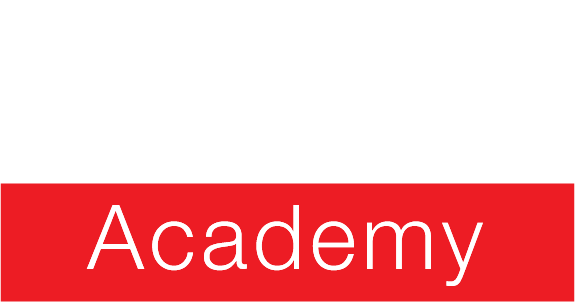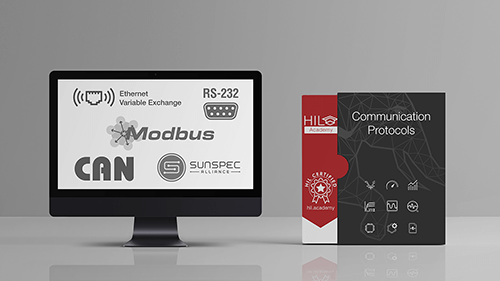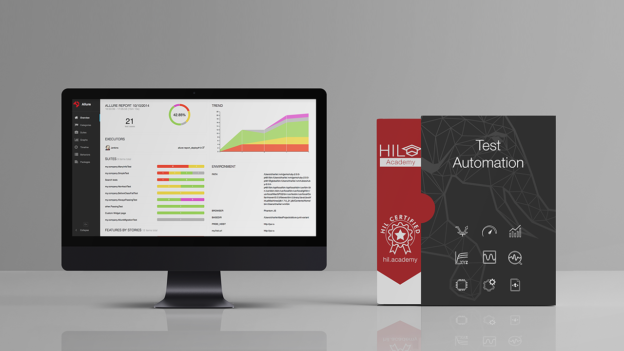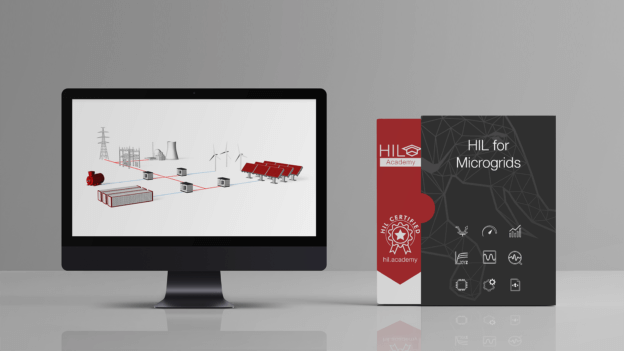Typhoon HIL
InstructorCONNECT WITH ME
INTRODUCTION
COURSES
HILの基礎
HIL Fundamentals is the first course in the HIL Specialist 2.0 specialization program authored by Typhoon HIL engineers. This course series is designed to raise your skill and knowledge of the Typhoon HIL toolchain so that you can confidently and successfully execute your own hardware-in-the-loop (HIL) projects.
Communication Protocols
Communication is the fifth and final course in the HIL Specialist 2.0 specialization program authored by Typhoon HIL Engineers. This…
Test Automation
Test Automation is the fourth course in the HIL Specialist 2.0 specialization program authored by Typhoon HIL Engineers. This course teaches you how to incorporate…
HIL for Power Electronics
HIL for Power Electronics is the second course in the HIL Specialist 2.0 specialization program authored by Typhoon HIL Engineers.…
HIL for Microgrids
HIL for Microgrids is the third course in the HIL Specialist 2.0 specialization program authored by Typhoon HIL Engineers. This course teaches you how to quickly build real-time…
HIL Fundamentals
HIL Fundamentals is the first course in the HIL Specialist 2.0 specialization program authored by Typhoon HIL engineers. This course series is designed to raise your skill and knowledge of the Typhoon HIL toolchain so that you can confidently and successfully execute your own hardware-in-the-loop (HIL) projects.
RATINGS & REVIEWS
It was an essential course for anyone looking to integrate the Typhoon HIL system with other devices and systems. It covered a wide range of protocols, including Modbus, CAN bus, Ethernet, and UART. well-organized and included plenty of practical exercises. I would highly recommend this course to anyone looking to improve their device integration capabilities.
The course provided a comprehensive overview of how to automate testing using the Typhoon HIL system and the pytest framework. The hands-on exercises were well-designed and helped me to build confidence in my ability to write automated tests. I appreciated the user-friendly interface of the Typhoon
TyphoonTest IDE is a powerful tool, and this course has given me all the necessary knowledge to be able to use it. The example exercise provided in the Typhoon Test module is great because it is easily exportable to other types of simulations. Including a section for Python Fundamentals with a CodeAcademy course in the materials section has been a great idea, at least it has helped me a lot.
Good intro to python and pytest, but the TyphoonTest portions were rushed making it difficult to follow along with the videos. A lot of the functions and parameters that were introduced in TyphoonTest were not explained fully.
I agree with David.
The HIL for Microgrids course provided a lot of insight into how to build accurate microgrid models using the Typhoon HIL system. The course was well-structured and included a mix of theoretical and practical exercises. I particularly appreciated the in-depth coverage of different modeling approaches and the tips for optimizing model
This course is informative to learn circuits fundamentals. A detailed explanation is expected for a better understanding. and there should be a feature for all students to communicate with each other so if anyone fell difficulty it will help a lot..
This is course gives you the basics for properly simulate power converters and show their limits and losses in real-time. Although as some others learners pointed it should be necessary to give us a more flexible and closer platform or way to help others.
Really great course, it was super thorough and the hands on work was very helpful. This course did a really great job of helping me move from knowing absolutely zero about the software, to feeling relatively competent with it. One thing I would have liked would be to get explanations of why the quiz answers are right or wrong.
The artificial voice was a little hard to understand, thankfully there are transcripts. Furthermore, when I was following the video tutorials on Lesson 2 about creating a simple drive system, the program was compiling forever and one of error messages said I should contact Typhoon HIL.
Thank you for your feedback and for the support ticket sent to us! Regarding the issue with the compilation, we would like the community to know that running a model from a OneDrive folder may present file writing issues.
The use of Core Couplings was well explained, but I missed more details, once in my opinion Circuit Partitioning is one of the biggest challenges for new Typhoon HIL user. I have some experience (about 3 years) in Typhoon HIL and sometimes I make mistakes though. Talking about the whole course I think it's a great opportunity to any user to fix knowledge in Typhoon HIL tools!
Getting started with a HIL device with so many capabilities and options like Typhoon HIL can be extremely overwhelming at first. However, this course provides a very comprehensive basic fundamentals in a way that makes it very easy to start simulating with Typhoon HIL.
I had to go through some concepts severaltimes to understand it mainly because I am learning this for the first time and after 11 years of passing out from my BSc. However it was refreshing and looking forward to using HIL software to learn and work purposes.
This is the best way for people starting to use HIL to get familiar with the most important features of the software. For those already familiar with the tool, it is nice to cover the basics again and probably learn a couple of new features, as I did. Looking forward to the remaining lessons to be added!
Basic idea is clear. The software is a free source for virtual hil application. But, it will be available for few days only. Please make it available for us completely in virtual mode so that we can run our basic simulation.
Two critiques: 1) The robot voice is very awkward, worked a lot better for me when I put it on 1.25 speed; so may be rising the synthesizer frequency a bit will surpass the "uncanny valley" feeling it makes on normal speed. 2) Make configuration tables of the devices easily available in the internet, so I can find the table of the device I don't have, for the Quiz.
Thank you for attending the course and for providing us with a feedback. We appreciate it.
I really liked being able to watch videos on how the system is to be used. However, I did not like that many of the steps or instructions were done very quickly or mistakenly and then fixed during a following step. In order to make this better, I think it would be really nice to have a step-by-step tutorial (or outline) for one to go through while comparing our work to the video.











Thank you! We are glad that you have found this course interesting!